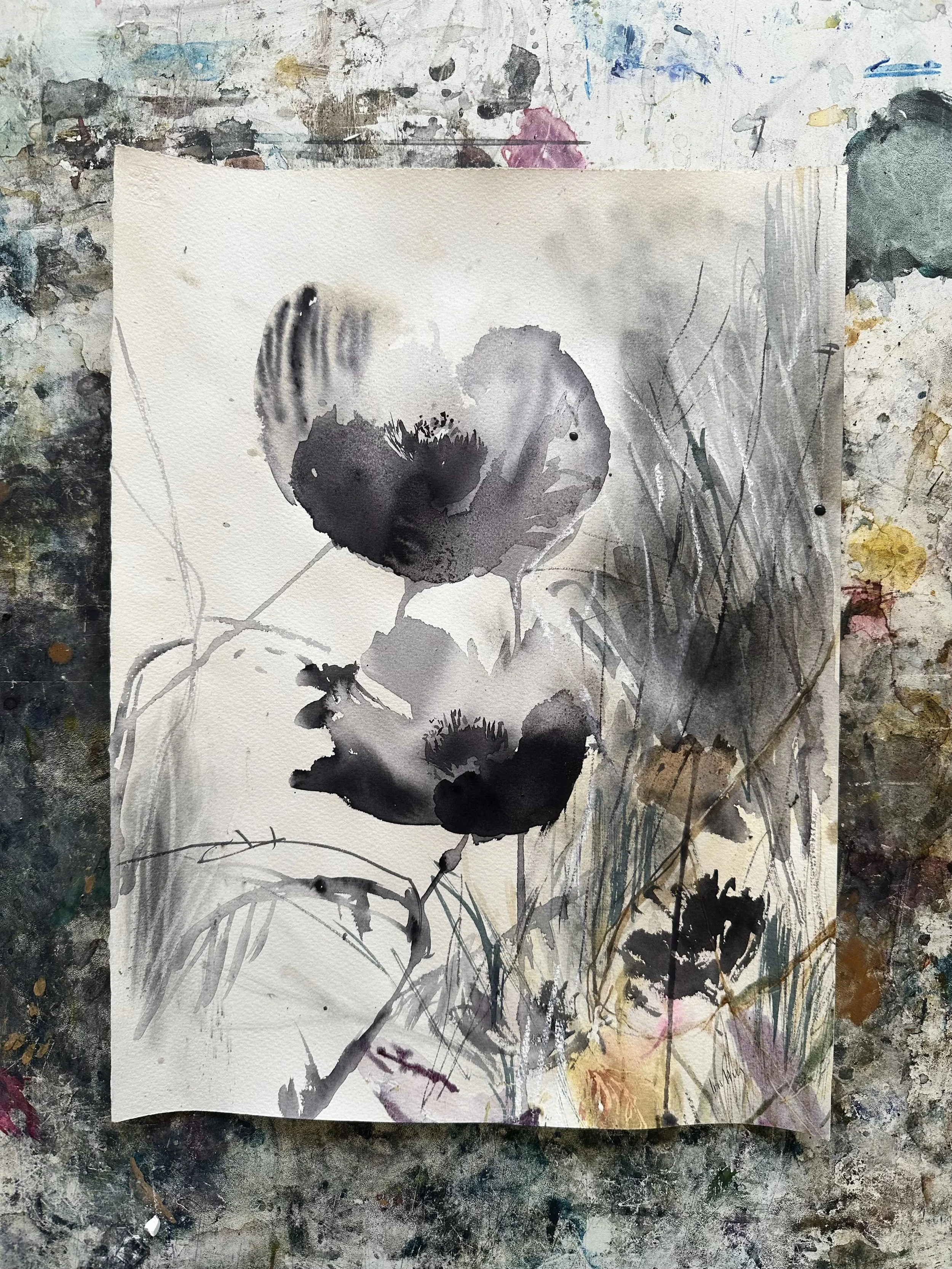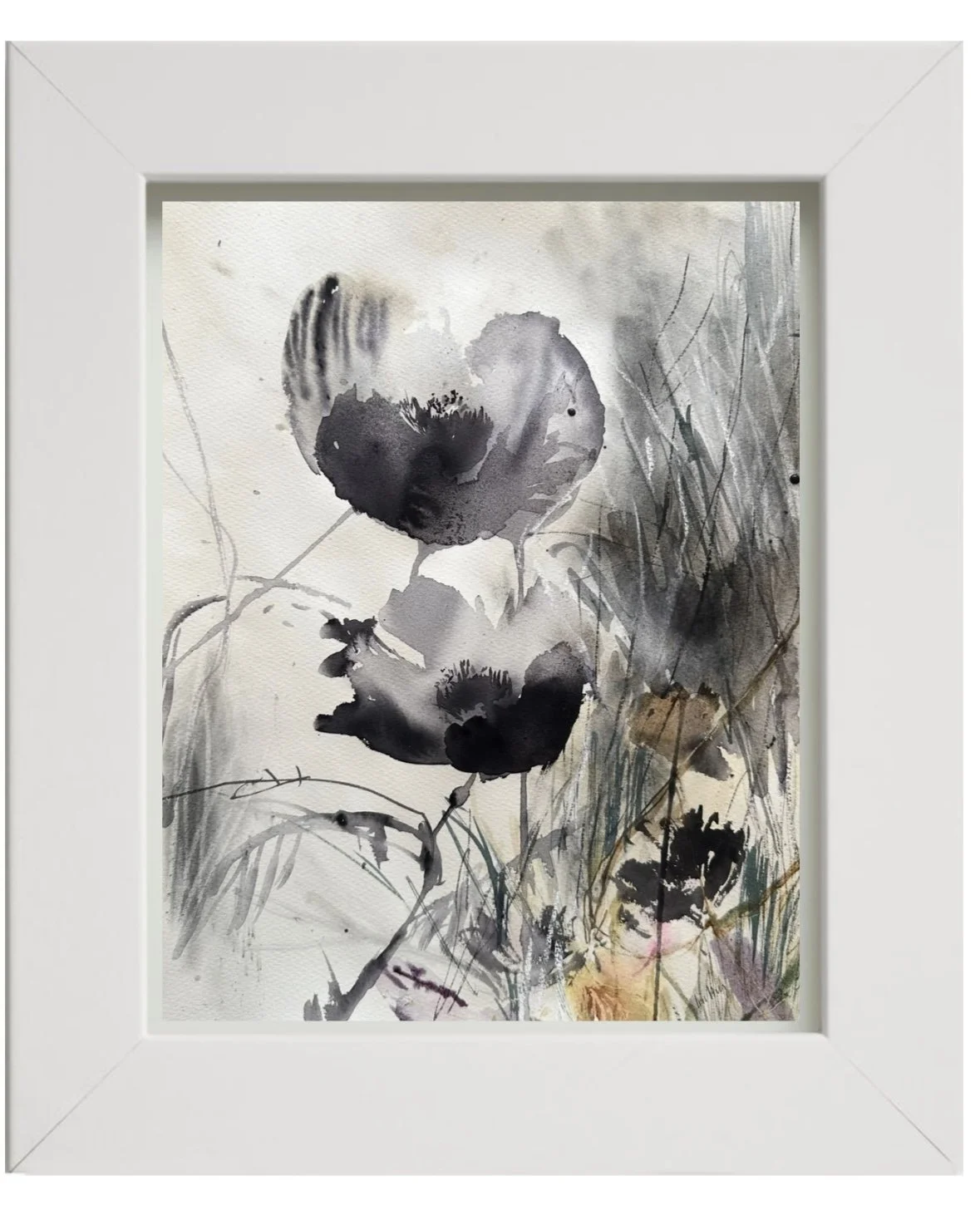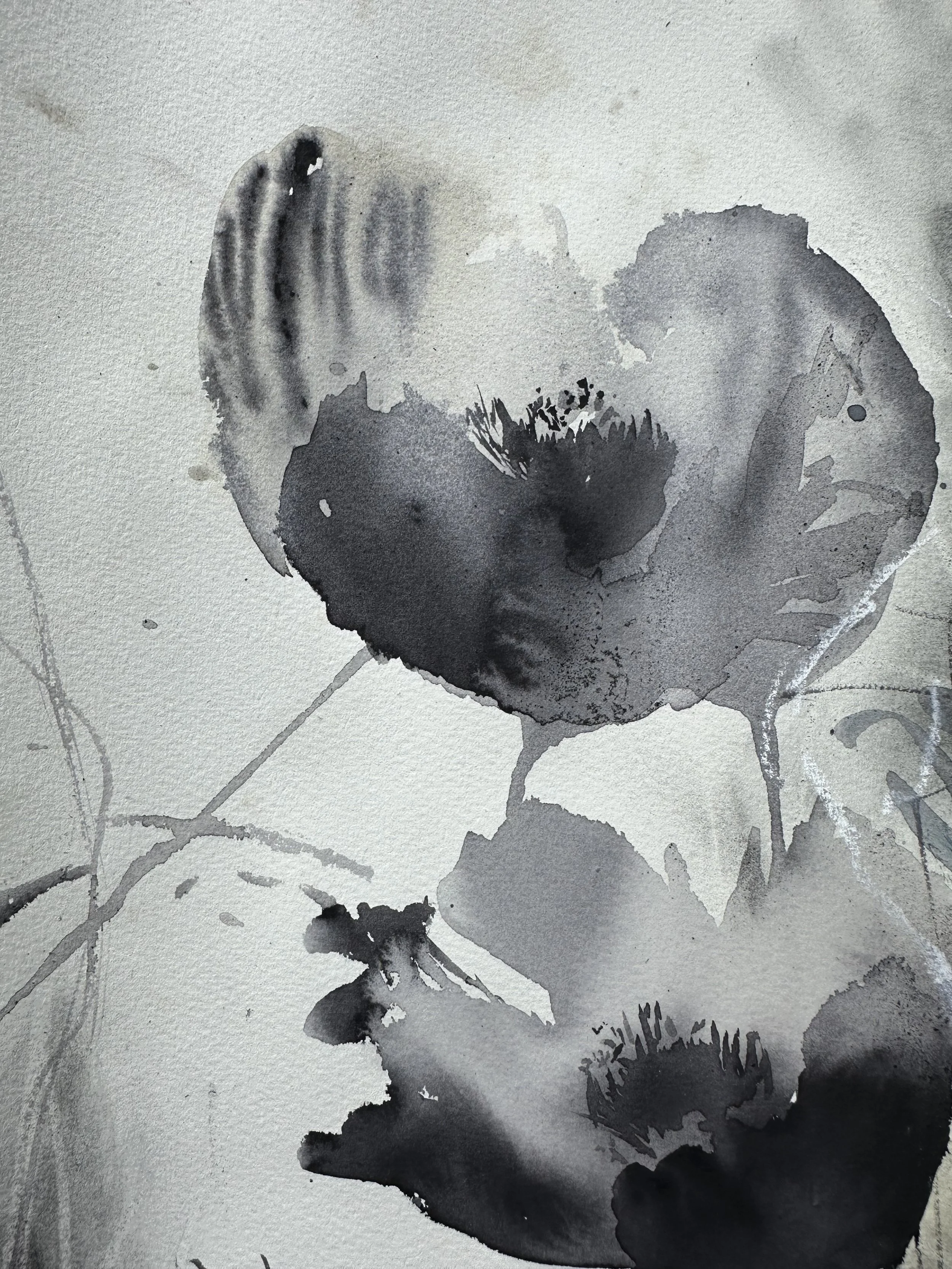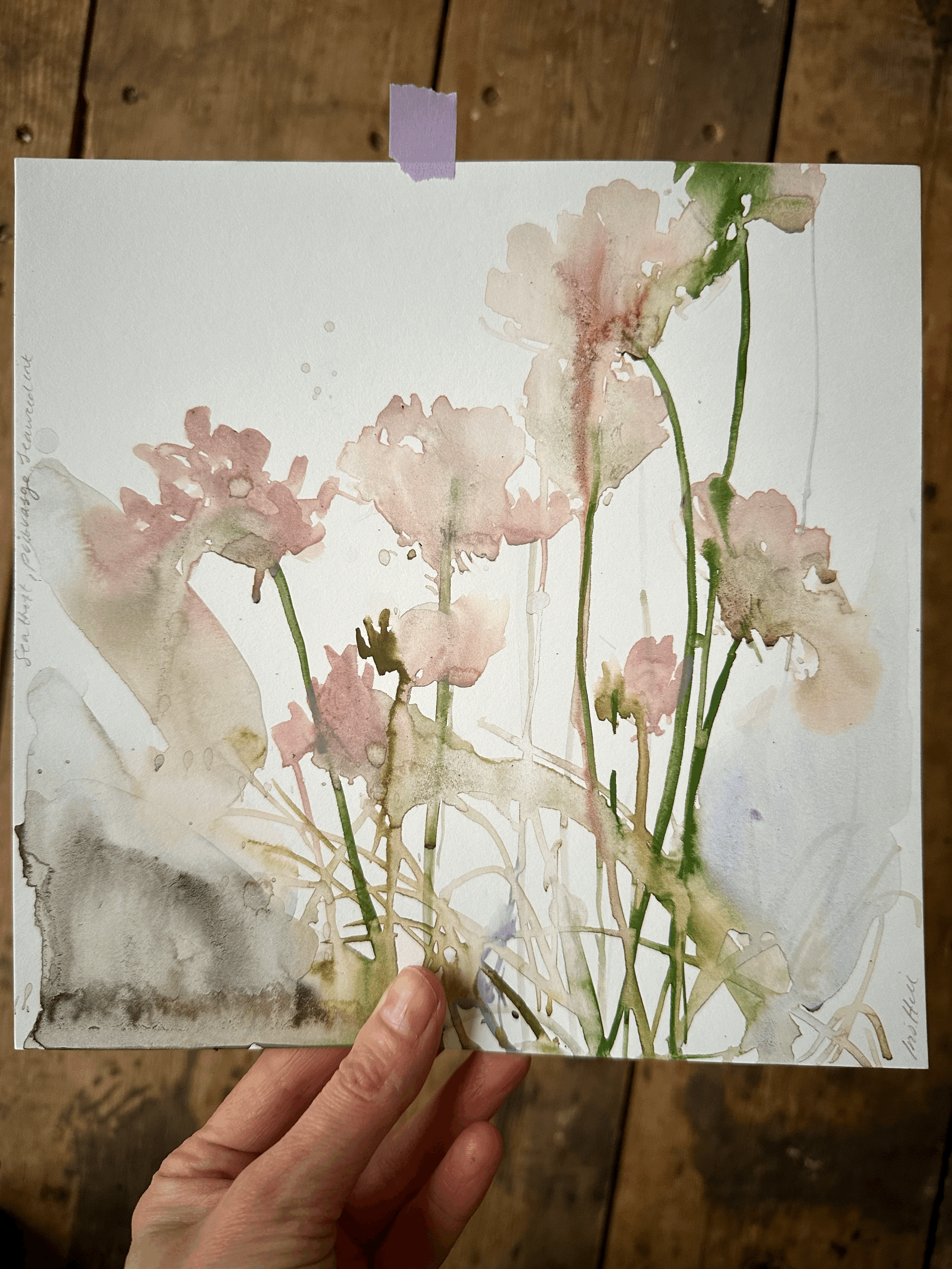 Image 1 of 4
Image 1 of 4

 Image 2 of 4
Image 2 of 4

 Image 3 of 4
Image 3 of 4

 Image 4 of 4
Image 4 of 4





Purple Oxytropis - Oxytropis helleri (I)
Painted with watercolour and natural pigments – seaweed from Portvasgo, RSPB highland flow country peat, oak gall ink from Embercombe, Dartmoor, knopper gall ink from Netley Common, acorn caps from Netley Common, lichen from Dartmoor’s Yarner wood.
Piece measures 140 x 200 cm, 300gsm Fabriano hot pressed watercolour paper.
This is an important piece from my Fragile Nature Exhibition, it is the moment I painted wild and free, it is a raw, emotional response to the Purple Oxytropis, a wild plant facing extinction.
My Fragile Nature exhibition, highlights wild plants that are at risk of extinction and explores the relationship between art and conservation. A showcase of my time at conservation charity Plantlife as their first artist in residence.
The exhibition, is born out of my transformative journey last summer visiting some of the rarest plants in the UK. From the rugged coast of the Highlands to the road verges of Kent, I have encountered and connected with overlooked but remarkable plant species.
This striking flower is one of Scotland’s rarest wild plants. It grows in two very different areas: - on high mountain ledges in Europe and the UK - on the coast in northern Scotland Purple Oxytropis is usually easy to spot if you are looking in the right places. You can encounter it on the coast in northern Scotland, where, in some special locations lots of plants grow on the cliffs and sand dunes. In the best spots the cliff tops and ledges are fringed by the bright, cheerful blooms in June and July.
The plant grows in tufts, with grey-green leaves covered in silky hairs, and distinctive, rich purple flowers in clusters. The seeds grow in pods after the flowers fade, showing that the plant is related to peas, clover, and vetches. Purple Oxytropis needs open, sunny areas and pollinators, particularly bees, to thrive. Grazing animals like to eat it, but growth of dense vegetation and scrub will choke this plant, so careful management of grazing is important for conservation of this rare wildflower. Monitoring is also vital to keep track of population trends. Purple Oxytropis is also a priority species for the Species on the Edge project, in which Plantlife is a partner.
Notes to investors, original art care notes: Watercolour paints are high grade light fast pigments. Natural pigments may alter overtime, there may be a slight fade of darkening to the tones. To avoid this keep Please keep your Iris Hill original out of direct sunlight and heat, for example do not hang over a radiator or where there is excessive moisture.
Painted with watercolour and natural pigments – seaweed from Portvasgo, RSPB highland flow country peat, oak gall ink from Embercombe, Dartmoor, knopper gall ink from Netley Common, acorn caps from Netley Common, lichen from Dartmoor’s Yarner wood.
Piece measures 140 x 200 cm, 300gsm Fabriano hot pressed watercolour paper.
This is an important piece from my Fragile Nature Exhibition, it is the moment I painted wild and free, it is a raw, emotional response to the Purple Oxytropis, a wild plant facing extinction.
My Fragile Nature exhibition, highlights wild plants that are at risk of extinction and explores the relationship between art and conservation. A showcase of my time at conservation charity Plantlife as their first artist in residence.
The exhibition, is born out of my transformative journey last summer visiting some of the rarest plants in the UK. From the rugged coast of the Highlands to the road verges of Kent, I have encountered and connected with overlooked but remarkable plant species.
This striking flower is one of Scotland’s rarest wild plants. It grows in two very different areas: - on high mountain ledges in Europe and the UK - on the coast in northern Scotland Purple Oxytropis is usually easy to spot if you are looking in the right places. You can encounter it on the coast in northern Scotland, where, in some special locations lots of plants grow on the cliffs and sand dunes. In the best spots the cliff tops and ledges are fringed by the bright, cheerful blooms in June and July.
The plant grows in tufts, with grey-green leaves covered in silky hairs, and distinctive, rich purple flowers in clusters. The seeds grow in pods after the flowers fade, showing that the plant is related to peas, clover, and vetches. Purple Oxytropis needs open, sunny areas and pollinators, particularly bees, to thrive. Grazing animals like to eat it, but growth of dense vegetation and scrub will choke this plant, so careful management of grazing is important for conservation of this rare wildflower. Monitoring is also vital to keep track of population trends. Purple Oxytropis is also a priority species for the Species on the Edge project, in which Plantlife is a partner.
Notes to investors, original art care notes: Watercolour paints are high grade light fast pigments. Natural pigments may alter overtime, there may be a slight fade of darkening to the tones. To avoid this keep Please keep your Iris Hill original out of direct sunlight and heat, for example do not hang over a radiator or where there is excessive moisture.






















